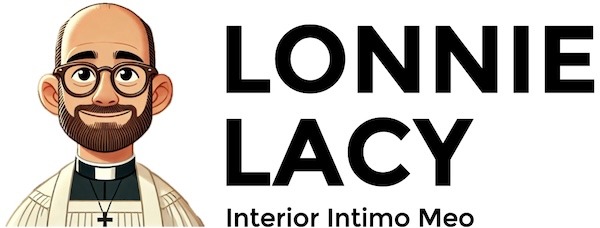St. John’s Episcopal Church
Tallahassee, FL
Ruth 1:1-18
Ruth 3:1-5; 4:13-17
This sermon was part of The Year of the Bible—a yearlong initiative in which all sermons, classes, and formation for all ages followed a parish-wide journey through the entire Bible. With the bishop’s permission, we used a custom lectionary: two readings drawn from that week’s section of Scripture, plus a psalm and the regularly appointed gospel of the day.
As we have embarked
on our Year of the Bible
here at St. John’s,
we have made the claim
over and over and over
that we believe the Bible—at its core—
is fundamentally a love story.
Even when it does not feel that way—
even when we slog through
whole stories and chapters and books
that seem to focus only on
war,
judgment,
sin—
our claim here at St. John’s
is that when you take the Bible as a whole—
when you read the entire story—
the Bible is a love story
from God
to all of humanity.
It is a choice, really—
you can use the Bible as a weapon,
or you can use it as a source and force for love.
We have chosen love.
And after making our way through
some particularly challenging books—
like Joshua and Judges—
today we land on a book
that feels so much nicer,
so much lighter,
so much more lovely.
Today, we land on the book of Ruth.
In fact, the book of Ruth is so lovely
that in many denominations,
one of its most famous lines
is often quoted at weddings:
“Where you go, I will go.
Where you lodge, I will lodge.
Your people shall be my people,
and your God shall be my God.”
But make no mistake:
the book of Ruth
is not about namby-pamby,
googly-eyed,
sweet and saccharine love.
This is a story about real love—
Love with a capital L—
Love that changes lives,
that makes room for differences,
that accepts people as they are.
Some have even called it “bulldozer Love,”
because it has the power to tear down the walls
we are so fond of building
within our societies.
Before she is anything else,
Ruth is an outsider.
The writers of this story
go to great pains to ensure we know this:
Ruth is a foreigner,
a Moabite,
a Moabite woman,
a Moabite widow woman.
She is the very image
of what the Israelites were told to avoid.
She is, by every biblical standard up to now,
the wrong person
from the wrong place
with the wrong background.
And yet—
here she is.
Her Jewish husband has died.
Her mother-in-law Naomi tries to send her away.
But Ruth has nowhere to go.
And somehow,
God intends for their lives
to be bound together.
The miracle of the book of Ruth
is that it even exists at all.
For all the stories of war,
sin,
purity,
division,
guilt,
and shame—
here we have a story
in which God’s heart is revealed
as leaning toward the margins.
God’s intention is clear:
to break down walls,
to bring outsiders in,
to redeem not just those at the center,
but especially those at the edge.
And just in case we ever thought
this kind of inclusive love was optional—
the ancient rabbis made sure Ruth stayed in the canon.
They sat around a table and said,
“We need Joshua, Judges, Leviticus,
sure—
but we need Ruth, too.
We need a fuller picture of who God is.”
Yesterday, we held our long-postponed
Diocesan Convention.
And by canon law,
I am required to give you a brief report.
So here goes—succinctly:
- St. John’s was represented by Jonathan Jackson,
Kelly Kirby, Pam Jordan Anderson, and myself. - Elections were held for diocesan offices.
- The budget was presented with great transparency.
- A powerful resolution on Becoming Beloved Community
was passed, strengthening our journey toward racial reconciliation. - Most other proposed changes to diocesan canons were tabled.
The biggest news?
Bishop Howard has retired as of October 31.
The Standing Committee is now serving as our ecclesiastical authority.
After years of division,
there is new energy around transparency, trust, and healing.
In January, there will be a special convocation—
a hopeful next step—
bringing representatives together
to listen, speak, and begin rebuilding trust.
This matters to us at St. John’s.
Even if we do not always feel the ripple effects,
we are Episcopalians.
We are connectional Christians.
We know what it means
to hold fast to hope
and love boldly across difference.
We have grace to give,
love to offer,
and a witness to bear.
So please—
pray for the Diocese of Florida.
It is your church, too.
Okay—back to Ruth.
A few weeks ago,
I showed you that beautiful illumination
of Jesus’ genealogy in the St. John’s Bible.
And who do we find in that list?
Ruth.
Ruth—an outsider—
brought in so completely
that her great-grandson is David . . .
and David’s distant descendant
is Jesus.
This is no accident.
This is how God works.
So yes—
the book of Ruth is lovely.
But it is not about tender poetry
or warm feelings.
It is about love that crosses borders,
love that bulldozes barriers,
love that changes lives.
And this love—
this bulldozer love—
is the kind of love
we are called to embody.
It is the kind of love
our world is starved for.
And we know how to offer it.
I’ll close with a poem
by Edwin Markham.
You may have heard it before:
“He drew a circle that shut me out—
Heretic, rebel, a thing to flout.
But love and I had the wit to win:
We drew a circle and took him in.”
Y’all—our Bible is a love story.
And our God is always
drawing the circle wider.
So in the spirit of Ruth and Naomi,
in the spirit of Jesus,
in the spirit of hope—
let’s keep drawing wider circles.
Let’s do it
for the sake of love.
Amen.
